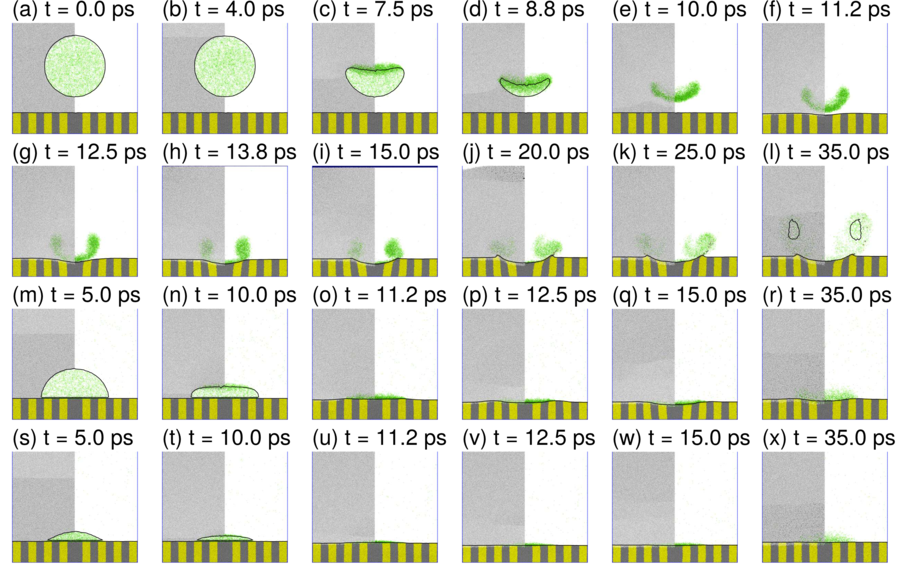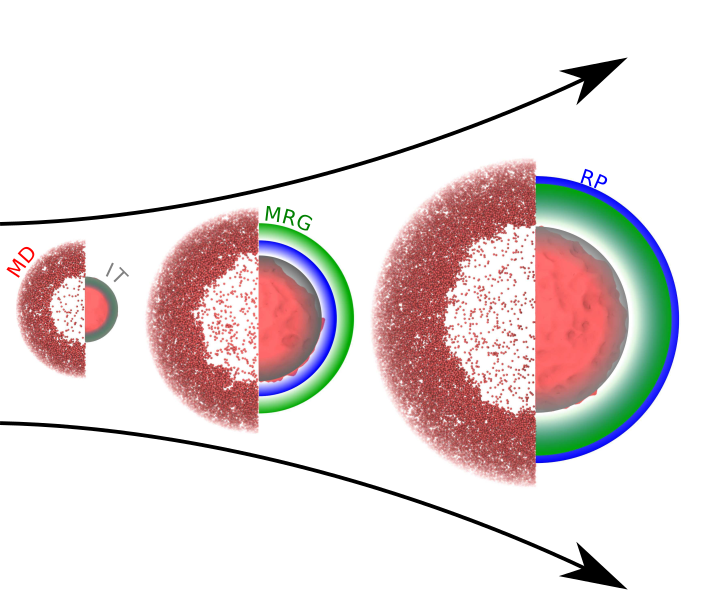Nanobubbles are being applied in cancer treatment, surface cleaning, sonochemistry, and water treatment, for break-down and removal of particles/cells and enhanced chemical reactions. Central to these applications is their cavitation dynamics, or how they respond under rapid variations in pressure, for example under ultrasound irradiation. Conventional cavitation models for macroscale bubbles typically fail at the nanoscale due to heterogeneous surface pinning effects, high-density non-ideal gas behaviour, rarefied gas dynamics, and other atomic-level phenomena. In this research, we investigate the suitability of these classical models for pinned surface nanobubbles and bulk nanobubbles, and derive new theoretical models to explain their often anomalous behaviour.
This work is being conducted by Duncan.

